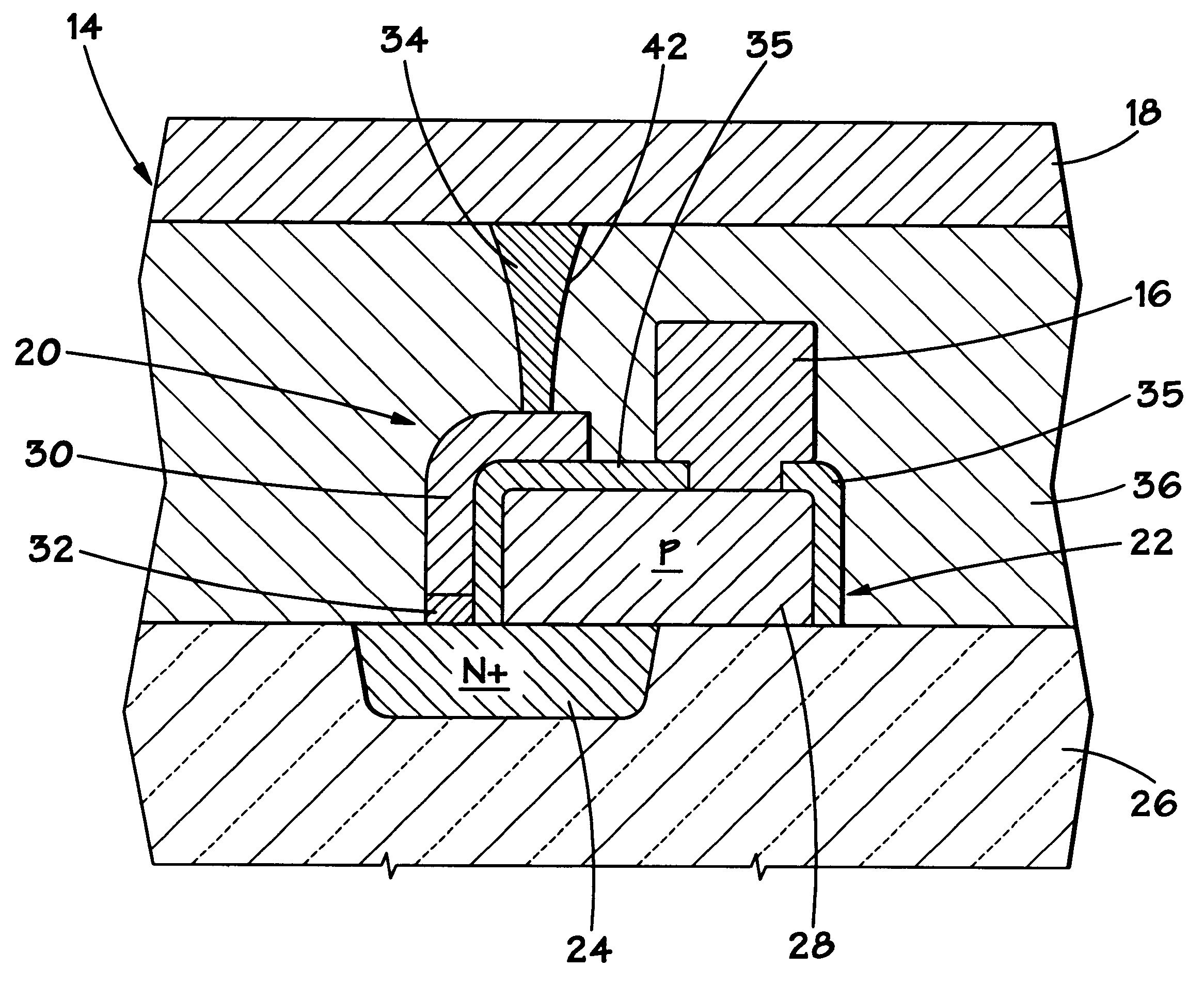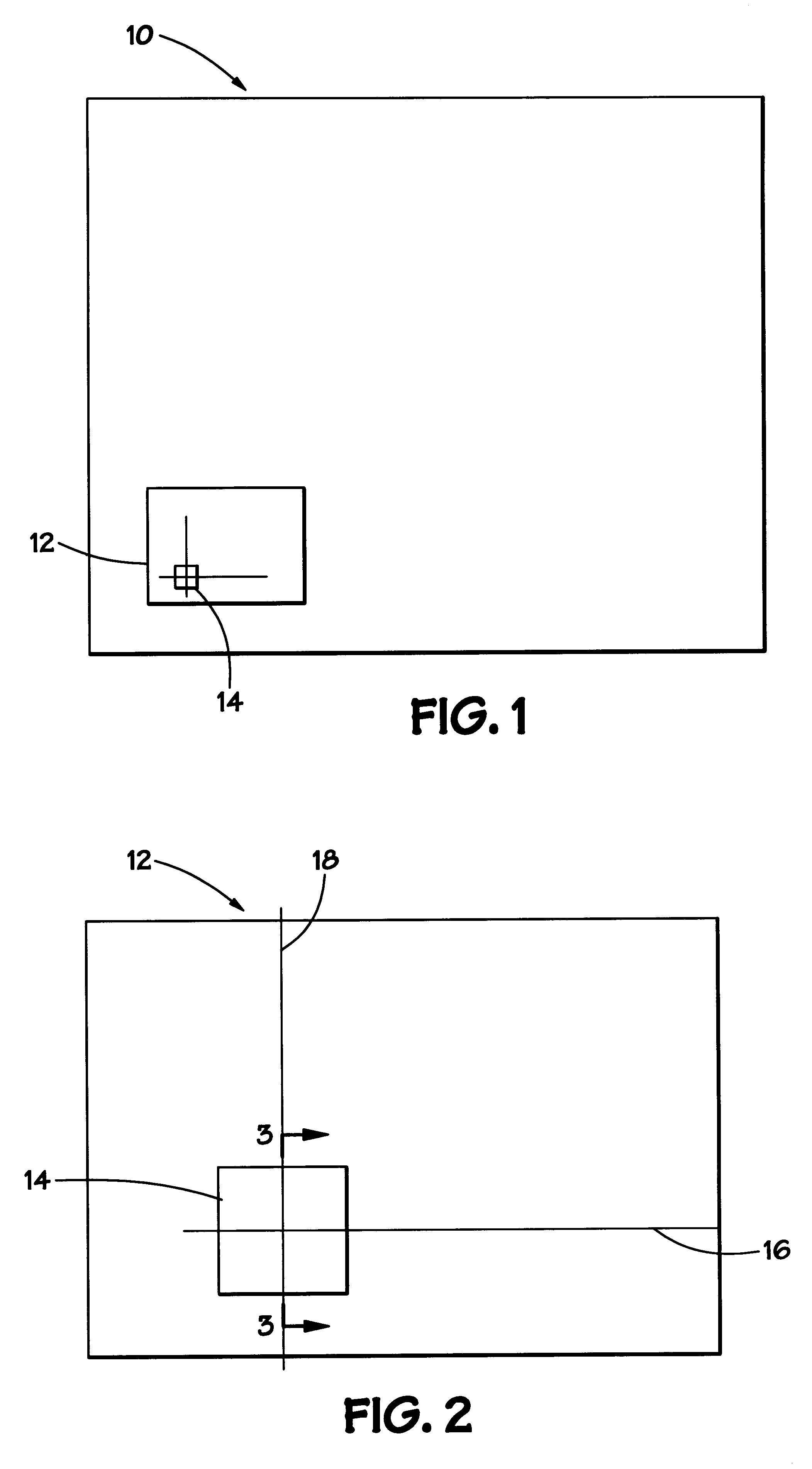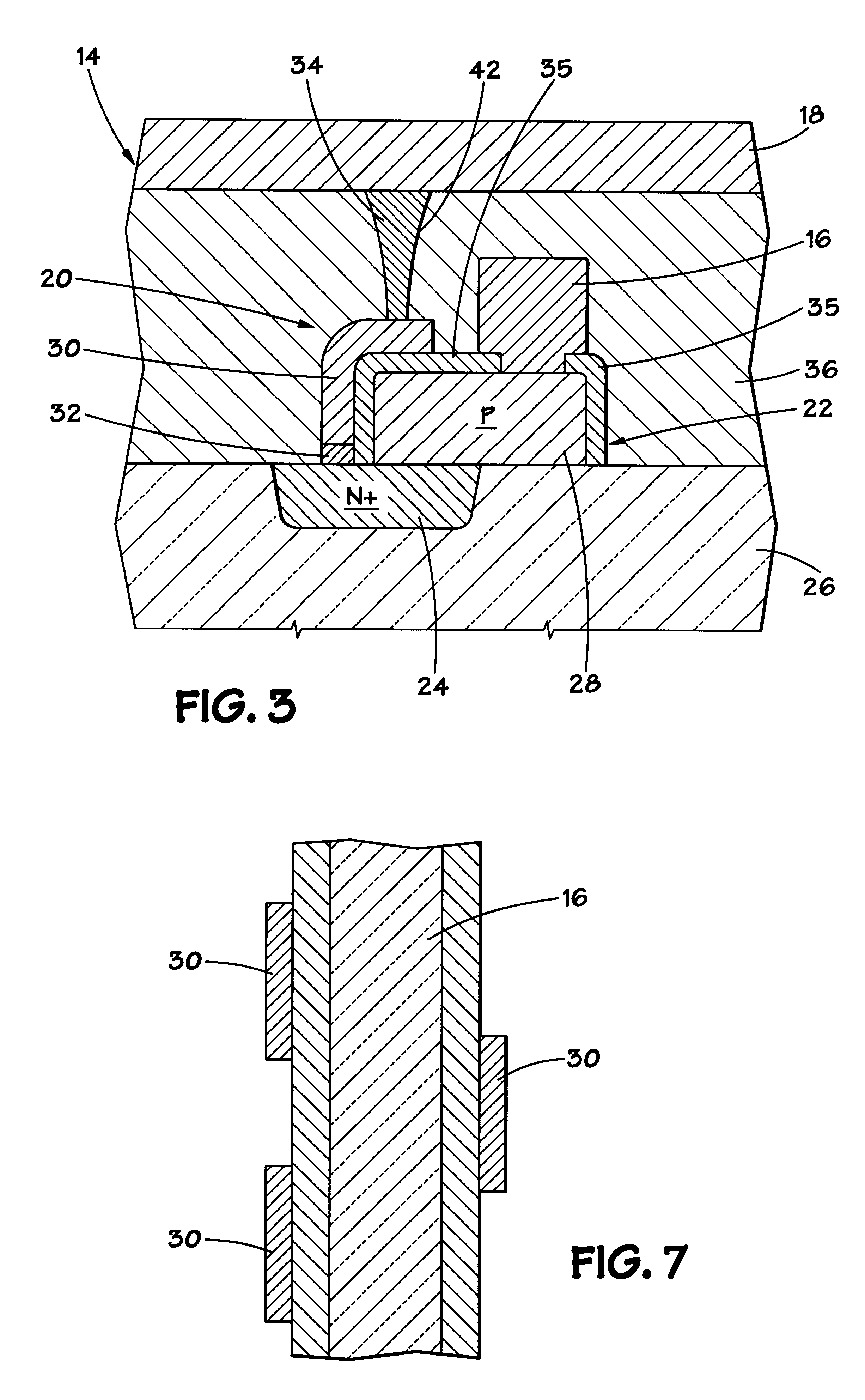Memory cell having a reduced active area and a memory array incorporating the same
a memory cell and active area technology, applied in the field of memory cells, can solve the problem of less than optimal repeatability
- Summary
- Abstract
- Description
- Claims
- Application Information
AI Technical Summary
Benefits of technology
Problems solved by technology
Method used
Image
Examples
Embodiment Construction
Turning now to the drawings, and referring initially to FIG. 1, a memory device is illustrated and generally designated by a reference numeral 10. The memory device 10 includes a plurality of memory arrays 12, one of which is illustrated. Each memory array 12 includes a plurality of memory cells 14, one of which is illustrated in FIG. 2. The memory cells 14 are arranged in rows and columns. Memory cells 14 in each row are connected by a respective row line 16, and memory cells 14 in each column are connected by a respective column line 18. Each memory cell 14 can be accessed for reading or writing by selecting the corresponding row and column coordinates and applying the appropriate voltage or current signal.
FIG. 3 illustrates an exemplary memory cell 14. The memory cell 14 includes a memory element 20 coupled to an access device 22. The memory element 20 and the access device 22 are coupled between a respective row line 16 and a respective column line 18. The access device 22 is a ...
PUM
 Login to View More
Login to View More Abstract
Description
Claims
Application Information
 Login to View More
Login to View More - R&D
- Intellectual Property
- Life Sciences
- Materials
- Tech Scout
- Unparalleled Data Quality
- Higher Quality Content
- 60% Fewer Hallucinations
Browse by: Latest US Patents, China's latest patents, Technical Efficacy Thesaurus, Application Domain, Technology Topic, Popular Technical Reports.
© 2025 PatSnap. All rights reserved.Legal|Privacy policy|Modern Slavery Act Transparency Statement|Sitemap|About US| Contact US: help@patsnap.com



